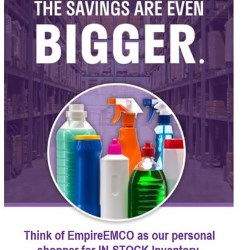

Harvey – The U.S. Petrochemical market is gradually recovering from the after effects of Hurricane Harvey. At its peak, there was over 65% of PX capacity and 75% of MEG capacity in the U.S. that was impacted. This forced PET producers to jump through hoops to backfill raw material supply in a hurry. In most cases, they were successful in finding adequate supply to keep their plants running but we do know that some production was voluntarily cut back for a short term to insure adequate feedstocks to run longer. Furthermore, raw materials had to be imported in from other regions and shipped with higher logistics costs to avoid the impassable rail roads in the Gulf region. So, while it appears the PET producers were able to maintain relatively normal production levels it was done so at elevated raw material costs. These higher costs will be felt well into the Fourth Quarter.
Raw Materials - The interruption in petrochemical production coupled with increasing costs of crude oil and naptha pushed up raw material prices of PX, PTA and MEG in September by about 2.5 cpp. But in effect the raw material cost increase to producers was higher than this given the added logistical costs outlined above. Both WTI and Brent prices are trading above $50/barrel today and projected cuts to output from Nigeria and Libya could stand to keep prices north of $50/barrel for the remainder of the year even with an increase in U.S. production. Raw material prices are expected to remain relatively flat for the remainder of the year.
PET Supply – The U.S. market has been thrown on its ears in terms of PET supply in the past 30 days. To begin, the market was already snug on availability with the impact of Hurricane Harvey and producer utilization rates being moderated to meet true demand. As reported previously, Europe went short on PET supply in August/September as one major producer was down under force majeure and a second halted operations due to financial issues. A third producer also shutdown operations due to a legal scandal. Europe lost a big chunk of resin supply with these outages and were forced to import PET from other regions to keep their plants running. Resin came in from Mexico, Brazil, Asia and even the U.S. This caused the U.S. PET producer utilization rates to increase to “sold out” positions for July and August. Since that time one of the major PET producers shutdown one of their plants in Mexico due to lack of raw materials brought on by financial issues and slowed production from their U.S. plant to very minimal levels. These same financial issues impacted production at their plant in Brazil. Keep in mind that a large quantity of PET from both the Mexican and Brazilian plants were imported into the U.S. each year and were a critical supply source for our market. The impact has resulted in over one billion pounds of PET supplied to the U.S. market annualized being removed within a matter of weeks. Unable to quickly fill the void, converters were scrambling to find PET from any corner of the world to keep their plants running. Some failed and the ones that succeed did so at significantly higher prices than were being sold prior to the shortage of supply. This environment exists still today with still no resolution for the plants which remain shut down or running at minimal rates. The other major domestic PET producers are as such running at capacity to try to fill the void with imports trying to make up the difference. We have not seen U.S. supply balances this tight in decades. Keep in mind that imports were already busy supplying the rest of the World including Europe which has lower freight rates from Asia than the U.S. and thus is the preferred market for Asian exporters. So, import shipments into the U.S. in August and September were lower than previous months.
Supply/demand fundamentals have kicked in and with demand well outstripping supply market prices for PET increase significantly in September. Producers announced a 6-7 cpp price increase for the month and spot prices rose much, much higher than this amount in September.
Domestic PET producers filed petitions against imports being sold at less than fair market value from Brazil, Indonesia, Korea, Pakistan and Taiwan. These happen to be the 5 largest importing countries of PET into the U.S. representing over 85% of the quantity shipped year to date. Imports of PET are on pace to reach record levels in 2017 at just over 1 billion pounds or roughly 15% of domestic PET demand. The penalties being sought range from as low as 9% to as high as 95% depending upon the country of origin. An initial ruling on whether to proceed with this case will be made this week with a final ruling expected for some time in Q2, 2018. But importers could face retroactive penalties 90 days prior to the final ruling. So, it is possible that import behavior is modified in early 2018 as a response to the potential penalties assessed. While we believe that eventually some of this stalled capacity in North American and Europe will restart we do not know if it all will restart. Furthermore, the large PET plant in Texas that was slated to come up in early 2018 is very much in question. I believe it is safe to say that PET supply to the U.S. market in 2018 should look significantly different than it has in years past given the uncertainty of production from one of its major manufacturers and the potential antidumping impact on imports.
Demand – The only bright spot for the U.S. is that it is exiting its peak demand period which could alleviate some of the short-term tightness. However, given that converters must continue to refill their supply pipelines we see the market remaining tight for the next 60-90 days.
Organic growth for PET is projected to be roughly 2.5-2.0% for 2017.
In Asia, polyester demand is near all-time highs with potential for further growth as some polyester plants come back to production before the end of the year.
RPET – RPET Bales prices have remained fairly flat since May but still remain over valued relative to the price of virgin PET resin and have increased in price 60% since the end of 2016. Reclaimers continue to struggle financially with the lack of margin and the downward price pressure from virgin PET resin. However, the recent shift in virgin PET fundamentals and with many forecasting higher PET prices for next year there has been a sustained resurgence of interest in RPET introduction into PET products. Perhaps knowing what is happening in the virgin PET markets, sellers of RPET flake and pellets increased prices up to 4 cpp in September and look for higher prices in October to help recapture the rise in bale prices that they have been forced to absorb year to date.
Logistics – As if it hasn’t been difficult enough, from now into 2018 the challenges facing the trucking industry will only increase. Owner/operators and small trucking companies are striking in several states and it is hitting CA and ID the hardest. Since the ELD mandate is slated for a Dec. 17th implementation we look for available capacity to worsen. One of the largest trucking companies in the US told their customers to budget for transportation costs increases as high as “10 percent or more” as the peak fall distribution season and electronic logging mandates intensify a driver shortage. It is a carrier market at present time with no signs of change on the horizon.
~ From PolyQuest.com




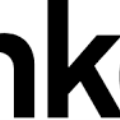




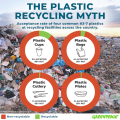

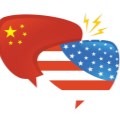



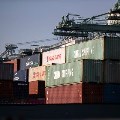




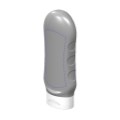
.jpg)

.jpg)
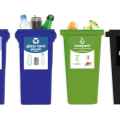

.jpg)



.PNG)



